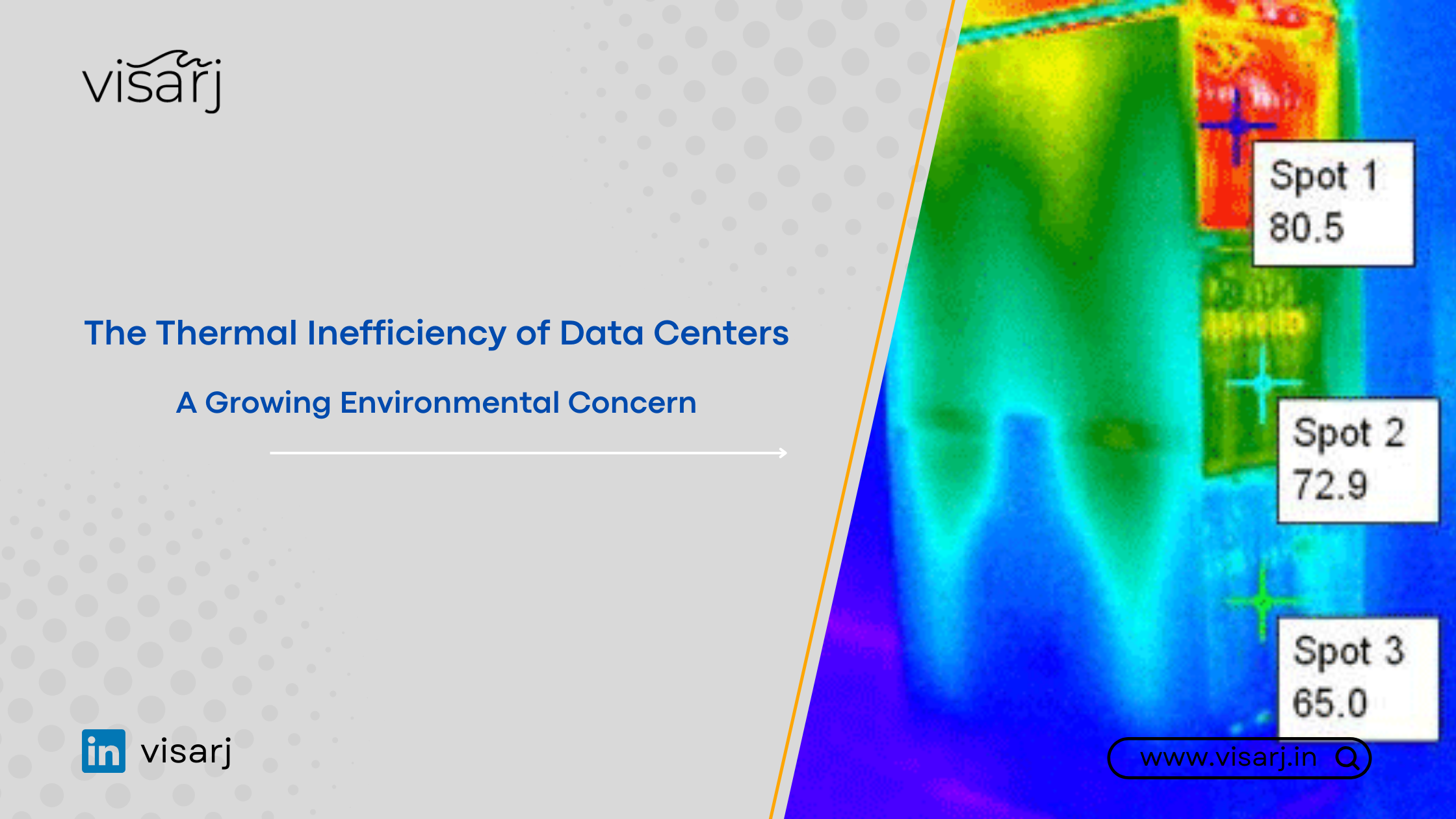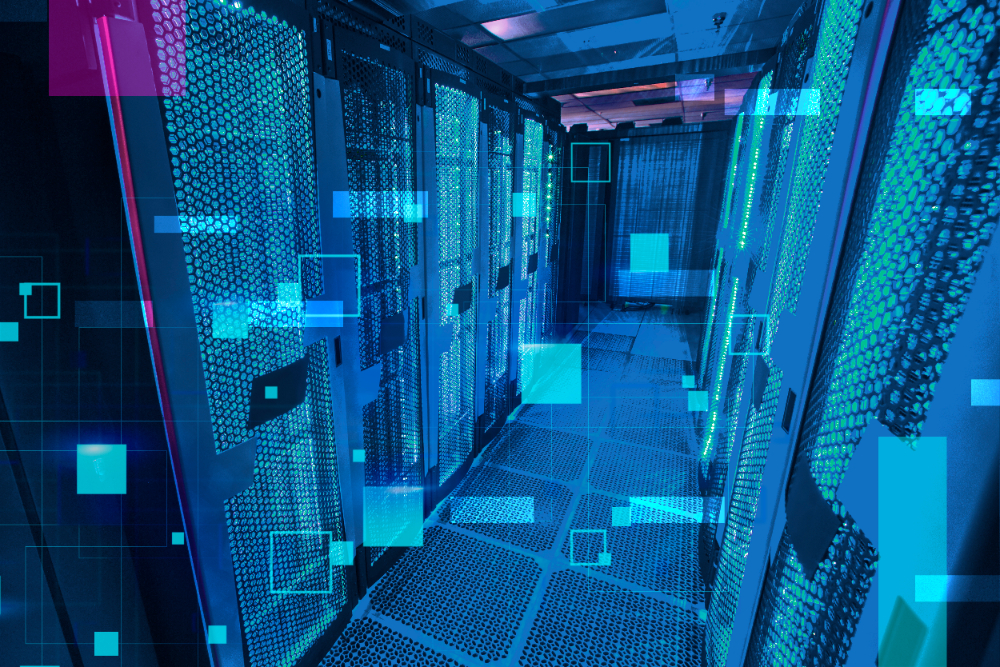
The Thermal Inefficiency of Data Centers: A Growing Environmental Concern
Data centers are the backbone of the digital world, storing and processing huge amounts of data every day. However, they also consume enormous amounts of energy, especially for cooling their servers and equipment. This poses a serious challenge for the sustainability and efficiency of data centers, as well as the environment and the society.
How much energy do data centers use for cooling?
According to a report by the U.S. Department of Energy, data centers accounted for about 2% of the total U.S. electricity consumption in 2022, equivalent to 70 terawatt-hours per year. This figure has likely increased since then, due to the growing demand for data-intensive applications such as streaming, cloud computing, artificial intelligence, and blockchain mining.
A significant portion of this energy consumption goes to cooling the data centers, which generate a lot of heat from their servers and equipment. Cooling is essential to maintain the optimal performance and reliability of the data centers, as well as to prevent overheating and damage. However, cooling also consumes a lot of energy and resources, such as water and refrigerants.
The amount of energy used for cooling depends on various factors, such as the size, design, location, and workload of the data center, as well as the type and efficiency of the cooling system. Different cooling systems have different energy requirements and environmental impacts. For example, air-cooled systems use fans and vents to circulate air and remove heat, while water-cooled systems use pumps and pipes to circulate water and transfer heat. Some data centers also use evaporative cooling, which uses water evaporation to lower the temperature of the air.
According to a study by the Lawrence Berkeley National Laboratory, the average power usage effectiveness (PUE) of data centers in the U.S. was 1.67 in 2022. PUE is a metric that measures the ratio of the total energy used by the data center to the energy used by the IT equipment. A lower PUE means a more efficient data center, while a higher PUE means more energy is wasted on non-IT functions, such as cooling. A PUE of 1.67 means that for every 1 watt of power used by the IT equipment, 0.67 watts of power are used for cooling and other overheads.
The study also estimated that the cooling systems accounted for about 33% of the total energy consumption of data centers in the U.S. in 2022. This means that about 23 terawatt-hours of electricity were used for cooling data centers in the U.S. alone in that year, equivalent to the annual electricity consumption of about 2.1 million households.
How much water do data centers use for cooling?
Data centers use for cooling is water. Water is used in various ways, such as for evaporative cooling, for cooling towers, for chillers, and for humidification. Water is also used to generate electricity for the data centers, especially if they rely on fossil fuels or hydropower.
The amount of water used by data centers depends on the type and efficiency of the cooling system, as well as the climate and the availability of water sources. Some data centers use more water than others, depending on their location and design. For example, data centers in hot and dry regions may use more water for evaporative cooling, while data centers in cold and humid regions may use less water for cooling towers.
According to a report by the International Energy Agency, the global water consumption of data centers was about 198 billion liters in 2022, equivalent to the annual water consumption of about 790,000 households. This figure is projected to increase to 314 billion liters by 2025, as the demand for data and the number of data centers grow.
However, this estimate may not capture the full extent of the water footprint of data centers, as it does not include the water used for electricity generation.
How do data centers affect the environment and the society?
The thermal inefficiency of data centers not only consumes a lot of energy and water, but also affects the environment and the society in various ways. Some of the impacts are:
Greenhouse gas emissions: Data centers emit greenhouse gases, such as carbon dioxide and methane, from their electricity consumption and their cooling systems. These gases contribute to global warming and climate change, which have negative effects on the ecosystems, the biodiversity, and the human health and well-being. According to a report by the International Energy Agency, the global carbon dioxide emissions of data centers were about 200 million tonnes in 2022, equivalent to the annual emissions of about 44 million cars. This figure is projected to increase to 300 million tonnes by 2025, as the demand for data and the number of data centers grow.
Water scarcity and pollution: Data centers use a lot of water, which may deplete the available water sources and affect the water quality and quantity for other users, such as the agriculture, the industry, and the households. Data centers may also discharge wastewater, which may contain contaminants, such as chemicals, metals, and microorganisms, that may pollute the water bodies and harm the aquatic life and the human health. According to a report by Greenpeace, some data centers in China have been found to violate the water discharge standards and cause water pollution in the nearby rivers and lakes.
Heat island effect: Data centers generate a lot of heat, which may raise the local temperature and create a heat island effect. This effect may increase the cooling demand and the energy consumption of the data centers and the surrounding buildings, as well as affect the local climate and the air quality. According to a study by the University of Toronto, the heat island effect of data centers in Toronto could increase the local temperature by up to 1.5°C and the cooling energy demand by up to 7%.
Data centers are essential for the digital economy and the society, but they also pose a serious challenge for the sustainability and the efficiency of the data centers, as well as the environment and the society. The thermal inefficiency of data centers consumes a lot of energy and water, and affects the greenhouse gas emissions, the water scarcity and pollution, and the heat island effect. These impacts have negative consequences for the ecosystems, the biodiversity, and the human health and well-being. Therefore, it is important to improve the thermal efficiency of data centers and reduce their environmental and social footprint.


